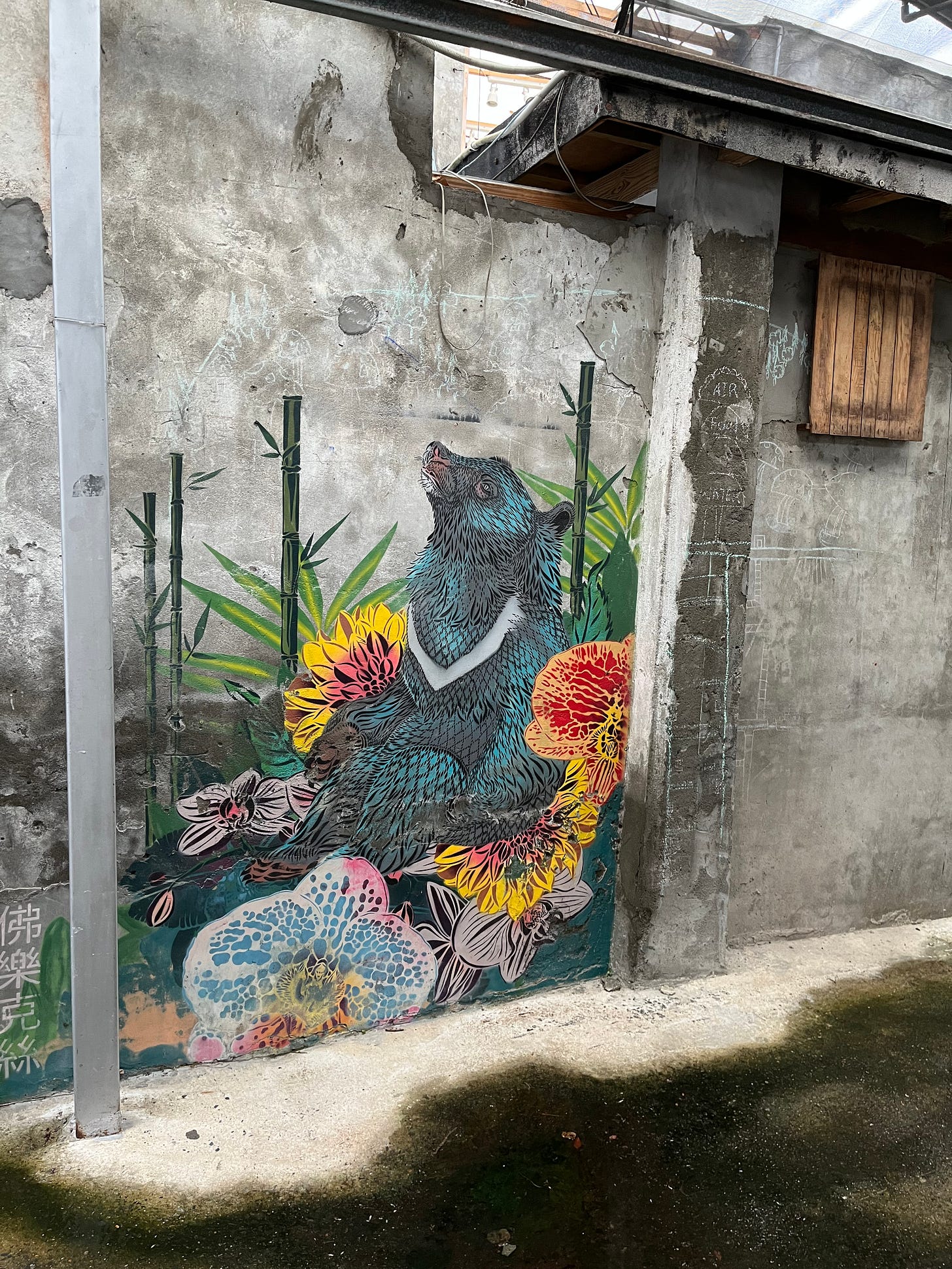Thankful for Cats, Pies, and Puppets
Happy Thanksgiving! A short post of Treasure Hill and National Taiwan Museum.
Happy Thanksgiving! Michelle’s dear cousin Margaret spoiled us by cooking up a meal replete with delicious turkey and stuffing and everything else, including three different pies. We’re thankful to have felt the warmth of home amidst the dreary Taipei weather. (It’s been really bad!) We’re still writing and reporting some longer pieces, but wanted to share photos of a few recent discoveries in Taipei.
We met up with Liya Yu, an artist-in-residence at Treasure Hill Artist Village and author of a fascinating forthcoming book, Vulnerable Minds: The Neuropolitics of Divided Societies. Formerly a settlement for military veterans, Treasure Hill was scheduled for demolition in the 1990s, but, after activists and artists protested the decision, the city government transformed the area into an artists’ village. The warren of narrow alleyways, snaking around a hillside, is dotted with wall art, cafes, artisan workshops, and art installations.
Keep reading with a 7-day free trial
Subscribe to A Broad and Ample Road to keep reading this post and get 7 days of free access to the full post archives.



